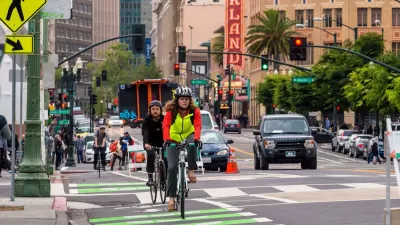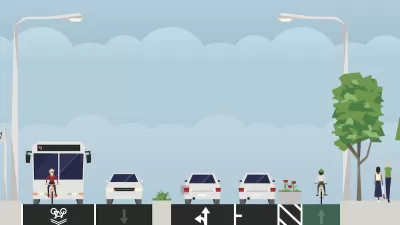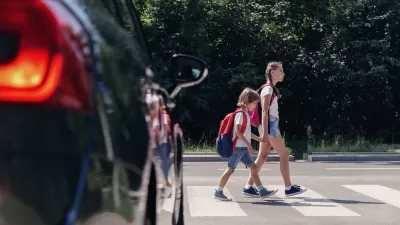The world is changing, and some state departments of transportation are still stuck in the 20th century. New research provides guidance for DOTs looking to break old habits of car dependency and obsessions with level of service.

An article by Daniel C. Vock notes the increasing number of controversies surrounding the practices of state departments of transportation designing roads that cut through communities:
As urban areas have become more popular, so-called smart growth advocates who want walkable neighborhoods, vibrant shopping districts and safe passage for cyclists and pedestrians frequently criticize state DOTs -- which were originally called “highway departments” -- for allowing fast vehicle speeds to take precedence instead.
Vock's work here is to amplify the messaging of advocates at Smart Growth America, which recently published a series of blog posts sharing research to inform the reform of state DOT practices.
Vock lists the lessons from Smart Growth America's research as follows:
- Keep it simple.
- There Are Drawbacks to 'On Time, Under Budget.'
- You're Measuring Success Wrong.
- Community Relations -- and Who Handles Them -- Matter.
- Don’t Ignore Land Use.
- No, Really, Don’t Ignore Land Use.
- It’s Not Always the DOT’s Fault.
- Change Has to Be Intentional.
FULL STORY: 8 Ways to Improve State DOTs, According to Smart Growth Advocates

Alabama: Trump Terminates Settlements for Black Communities Harmed By Raw Sewage
Trump deemed the landmark civil rights agreement “illegal DEI and environmental justice policy.”

Planetizen Federal Action Tracker
A weekly monitor of how Trump’s orders and actions are impacting planners and planning in America.

The 120 Year Old Tiny Home Villages That Sheltered San Francisco’s Earthquake Refugees
More than a century ago, San Francisco mobilized to house thousands of residents displaced by the 1906 earthquake. Could their strategy offer a model for the present?

In Both Crashes and Crime, Public Transportation is Far Safer than Driving
Contrary to popular assumptions, public transportation has far lower crash and crime rates than automobile travel. For safer communities, improve and encourage transit travel.

Report: Zoning Reforms Should Complement Nashville’s Ambitious Transit Plan
Without reform, restrictive zoning codes will limit the impact of the city’s planned transit expansion and could exclude some of the residents who depend on transit the most.

Judge Orders Release of Frozen IRA, IIJA Funding
The decision is a victory for environmental groups who charged that freezing funds for critical infrastructure and disaster response programs caused “real and irreparable harm” to communities.
Urban Design for Planners 1: Software Tools
This six-course series explores essential urban design concepts using open source software and equips planners with the tools they need to participate fully in the urban design process.
Planning for Universal Design
Learn the tools for implementing Universal Design in planning regulations.
Clanton & Associates, Inc.
Jessamine County Fiscal Court
Institute for Housing and Urban Development Studies (IHS)
City of Grandview
Harvard GSD Executive Education
Toledo-Lucas County Plan Commissions
Salt Lake City
NYU Wagner Graduate School of Public Service





























